The mid-range segment is perhaps the most saturated in the smartphone market. Just about every manufacturer is battling it out with phones that offer decent specs and more and more features at very competitive prices.
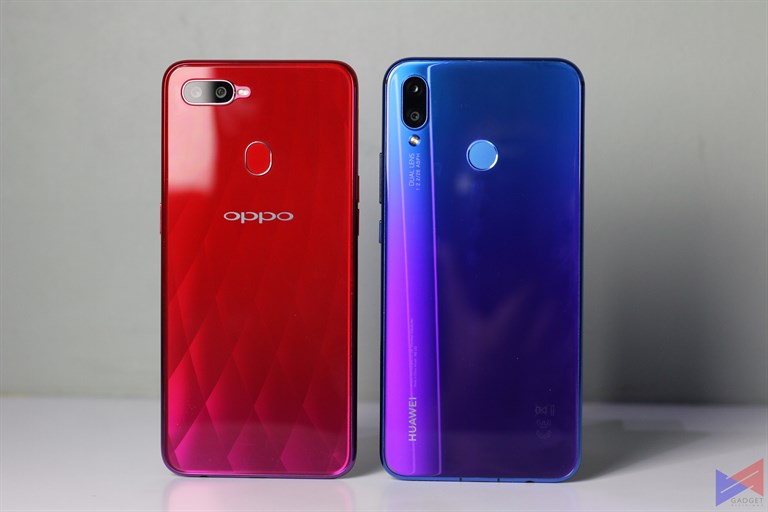 Today, we’re taking a look at two such devices – the OPPO F9 and the Huawei Nova 3i. Both are fairly new to the market. Both have dual rear cameras, and are being marketed for their imaging prowess. Oh, and they’re priced pretty close too. The F9 at PhP17,990, and the Nova 3i at PhP15,990.
Today, we’re taking a look at two such devices – the OPPO F9 and the Huawei Nova 3i. Both are fairly new to the market. Both have dual rear cameras, and are being marketed for their imaging prowess. Oh, and they’re priced pretty close too. The F9 at PhP17,990, and the Nova 3i at PhP15,990.
Camera
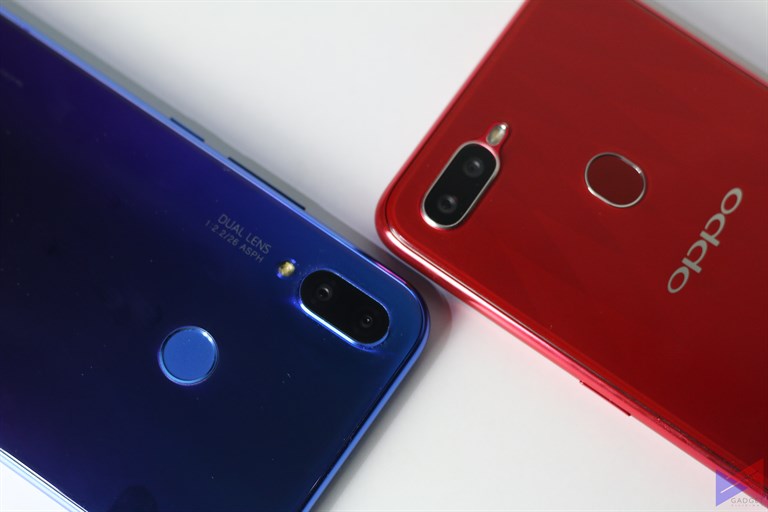 Both devices are equipped with dual rear cameras – a 16MP primary, and a 2MP secondary, the latter used for adding the depth of field effect to your photos. Both are also fitted with AI Scene Detection that enables the camera to optimize itself depending on your subject. Up front, the OPPO uses a single 25MP sensor, while the Nova 3i utilizes a 24MP + 2MP combination.
Both devices are equipped with dual rear cameras – a 16MP primary, and a 2MP secondary, the latter used for adding the depth of field effect to your photos. Both are also fitted with AI Scene Detection that enables the camera to optimize itself depending on your subject. Up front, the OPPO uses a single 25MP sensor, while the Nova 3i utilizes a 24MP + 2MP combination.
While having AI enabled is fine for most scenarios, there are times when you’ll just want to have it off. Sadly, the F9 doesn’t have any option for you to disable its AI, while the Nova 3i does. Our test today will involve a number of scenarios to determine each device’s strong and weak points. All shots were done in Auto Mode and to be in equal grounds, with AI-enabled.
Indoor
[images-comparison default_offset_pct=”0.5″ el_css=”” image_1=”47441″ image_2=”47432″ before_label=”OPPO F9″ after_label=”Huawei Nova 3i”]
Here, we have a photo taken in a fairly lit area inside a mall. Photos taken by both the F9 and the Nova 3i exhibit good sharpness and detail. Both also manage to control the graininess in the dark areas. The only notable difference is the Nova 3i tends to add a bit more brightness to the photo, as seen on the can of Coke. No clear winner here. (F9 – 1, Nova 3i – 1)
Plants
[images-comparison default_offset_pct=”0.5″ el_css=”” image_1=”47443″ image_2=”47434″ before_label=”OPPO F9″ after_label=”Huawei Nova 3i”]
In this instance, the photo shot on the OPPO F9 looks a bit darker, and looks less saturated. On the other hand, the one taken by the Nova 3i has richer colors, and more emphasis.
If it was a contest of which one looks more eye-candy, then the Nova 3i wins. But I prefer a more natural looking photo, as close as to what my eyes can see. In that regard, the OPPO F9 bags this round. (F9 – 2, Nova 3i – 1)
Cityscape/Structure
[images-comparison default_offset_pct=”0.5″ el_css=”” image_1=”47438″ image_2=”47429″ before_label=”OPPO F9″ after_label=”Huawei Nova 3i”]
Next up, we took a photo of a popular museum, at around 5:30PM.
 While the photos seem similar from afar, zoom in and you’ll see that the photo shot on the OPPO F9 is more grainy than the one taken by the Nova 3i (F9 – 2, Nova 3i – 2).
While the photos seem similar from afar, zoom in and you’ll see that the photo shot on the OPPO F9 is more grainy than the one taken by the Nova 3i (F9 – 2, Nova 3i – 2).
Depth of Field
[images-comparison default_offset_pct=”0.5″ el_css=”” image_1=”47439″ image_2=”47430″ before_label=”OPPO F9″ after_label=”Huawei Nova 3i”]
While only using a single lens, the OPPO F9 can still dish out a decent depth of field effect. Still, the Nova 3i’s dedicated camera for depth of field yields a more refined effect.
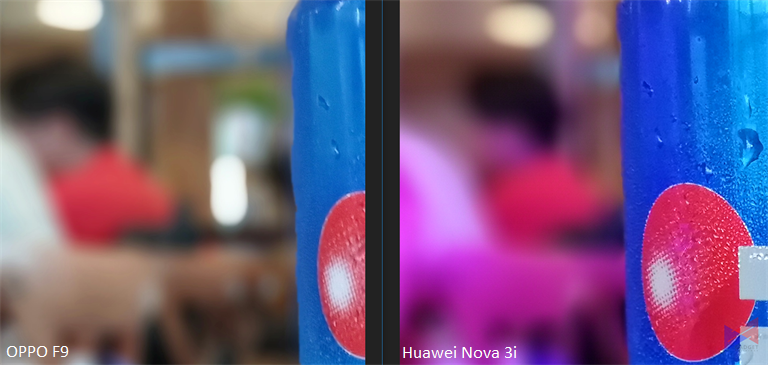 It’s not noticeable until you zoom in though. This one’s close, but I’ll have to hand it to the Nova 3i (F9 – 2, Nova 3i – 3).
It’s not noticeable until you zoom in though. This one’s close, but I’ll have to hand it to the Nova 3i (F9 – 2, Nova 3i – 3).
HDR
[images-comparison default_offset_pct=”0.5″ el_css=”” image_1=”47440″ image_2=”47431″ before_label=”OPPO F9″ after_label=”Huawei Nova 3i”]
This time, a photo of a busy intersection in a cloudy day. We checked to see what the HDR mode of both phones can do. And while both managed to properly distribute light to every subject in the image, though the photo taken by the F9’s is slightly more grainy in some parts such as the black signboard on the top left (F9 – 2, Nova 3i – 4).
Low Light
[images-comparison default_offset_pct=”0.5″ el_css=”” image_1=”47442″ image_2=”47433″ before_label=”OPPO F9″ after_label=”Huawei Nova 3i”]
Here’s a sample of a low-light shot in the streets of Manila. Both phones showcased decent prowess in their shots.
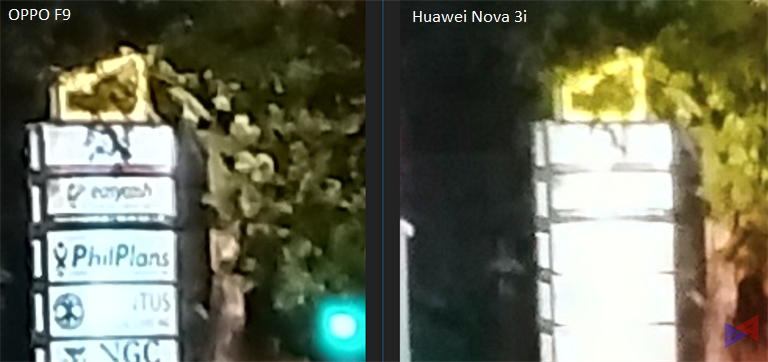 Zoom in on the illuminated sign board though, and you’ll see that the text is still readable on the photo taken by the F9, and is barely visible on the photo taken by the Nova 3i (F9 – 3, Nova 3i – 4).
Zoom in on the illuminated sign board though, and you’ll see that the text is still readable on the photo taken by the F9, and is barely visible on the photo taken by the Nova 3i (F9 – 3, Nova 3i – 4).
Selfie
[images-comparison default_offset_pct=”0.2″ el_css=”” image_1=”47445″ image_2=”47436″ before_label=”OPPO F9″ after_label=”Huawei Nova 3i”]
In this instance, both phones were able to showcase good details but the Nova 3i’s AI is more aggressive in amping up the colors to make things look more lively. Again, it’s down to what you’ll do with the photo. But in this case, the F9 wins due to its on point color accuracy (F9 – 4, Nova 3i – 4).
Selfie (Depth of Field)
[images-comparison default_offset_pct=”0.2″ el_css=”” image_1=”47444″ image_2=”47435″ before_label=”OPPO F9″ after_label=”Huawei Nova 3i”]
While the OPPO F9’s depth of field effect is only software-driven, it’s still more than decent for your usual social media posts. In this case though, the Nova 3i’s dual front cameras can generate a slightly more refined effect (F9 – 4, Nova 3i – 5).
Selfie (Low Light)
[images-comparison default_offset_pct=”0.2″ el_css=”” image_1=”47451″ image_2=”47452″ before_label=”OPPO F9″ after_label=”Huawei Nova 3i”]
As far as details are concerned, the F9 and the Nova 3i are neck and neck with a selfie in low light. As usual, the latter’s AI tends to enhance colors just a bit too much, making the photo look less natural. It does, however, demonstrate good control of the lights in the background, which is a bigger deciding factor (F9 – 4, Nova 3i – 6).
And the winner is…
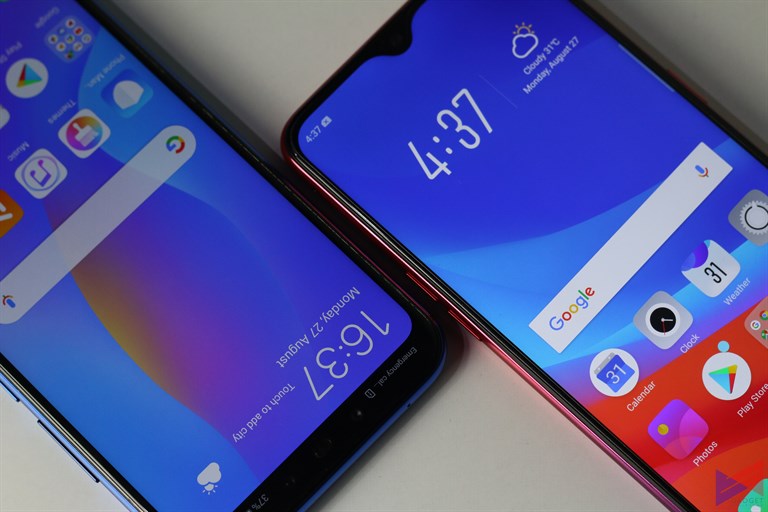 Based on our tests, the Nova 3i surpasses the F9 by a couple of points. The good thing is that you can’t go wrong with either of these phones. The Nova 3i may be better as far as photo quality is concerned, but it all boils down to what you prefer.
Based on our tests, the Nova 3i surpasses the F9 by a couple of points. The good thing is that you can’t go wrong with either of these phones. The Nova 3i may be better as far as photo quality is concerned, but it all boils down to what you prefer.
If having a good camera is your highest priority in buying a smartphone, go with the Huawei Nova 3i. If you want something that’s more of an all-rounder, go for the OPPO F9.
Emman has been writing technical and feature articles since 2010. Prior to this, he became one of the instructors at Asia Pacific College in 2008, and eventually landed a job as Business Analyst and Technical Writer at Integrated Open Source Solutions for almost 3 years.






